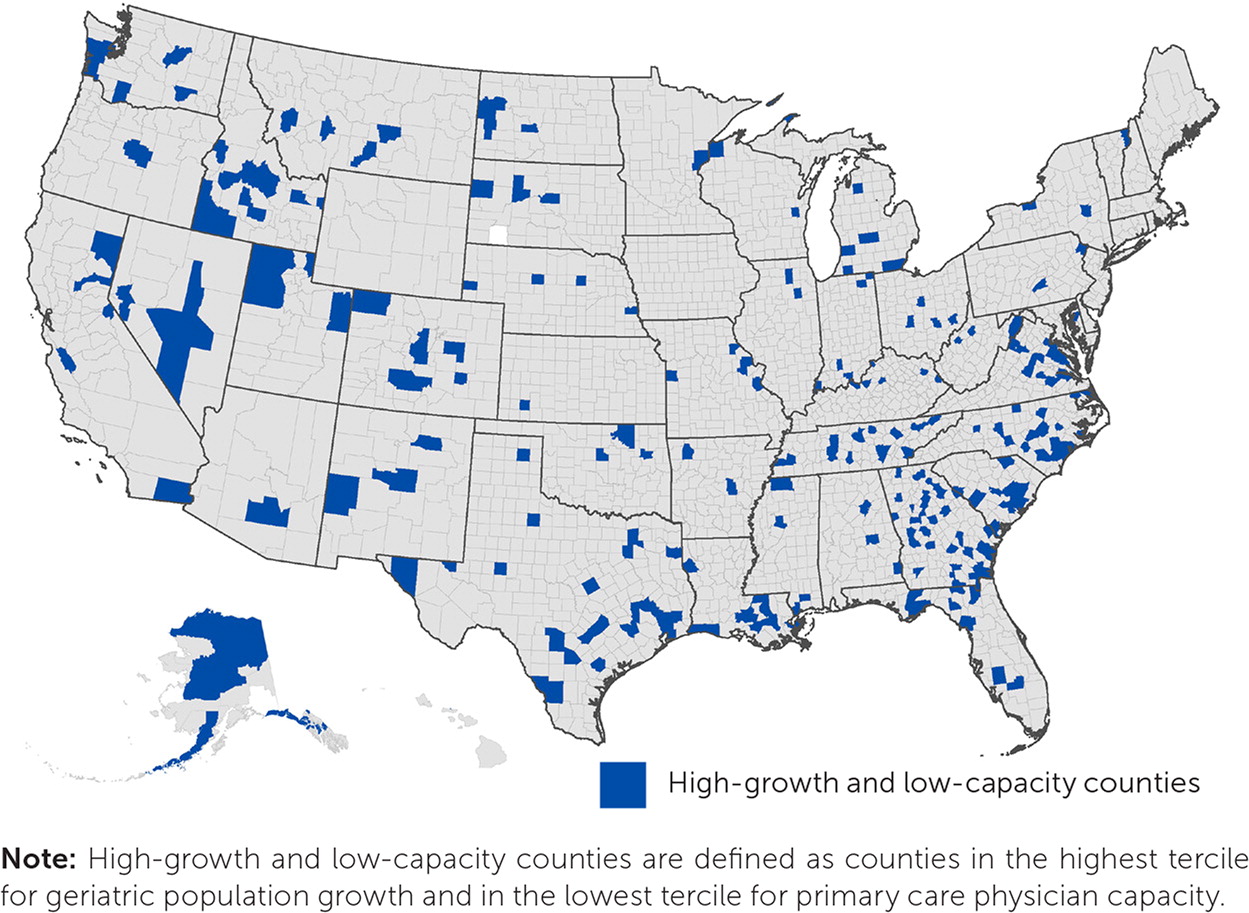
Am Fam Physician. 2024;109(4):308-309
Author disclosure: No relevant financial relationships.
The percentage of U.S. residents 65 years and older was 17% in 2020, and this number is expected to rise due to the aging of the baby boomer generation.1Although life expectancy fell between 2020 and 2021, the proportion of U.S. residents older than 65 years continues to increase.2This age group often has more medical comorbidities and prescription medications, increasing the demand for primary care access. Domestic migration (U.S. residents moving within the country) of this retirement-aged population further strains the primary care workforce in underserved areas.
Domestic migration increased during the COVID-19 pandemic and in the preceding decade. People 65 years and older represented a large proportion of those who moved within the United States. Western towns, such as Boise, Idaho, had a 60% growth in the population 65 years and older between 2010 and 2019.3 Phoenix, Ariz., and some smaller cities in the Rocky Mountains and New Mexico experienced similar growth. Non-Hispanic White adults comprise the majority (77%) of people 65 years and older, but there is an anticipated increase of 135% in Black and Asian people in this age group during the next 15 years.1,4,5 Demographics of the population are important because racially and ethnically concordant physician-patient relationships decrease cost, increase patient satisfaction, and lead to better outcomes.4
Primary care physicians treat patients with complex medical conditions, often having two or more diagnoses and requiring five or more medications.6 The pattern of complex care in the retirement-aged population increases demand for primary care access. The dark blue counties in Figure 1 include those with the lowest tercile for primary care physician capacity and highest growth of the population of adults 65 years and older. These counties are at the highest risk for decreased access to primary care, increased care needs, pressure on existing primary care physicians, and poor health outcomes caused by the high ratio of patients to clinicians. Many of these counties are rural, and there is a larger cluster of counties with lack of primary care access in the Southeast, as well as in the Northwest.

As domestic migration continues for the baby boomers and more residents of these communities need care for chronic conditions, the primary care workforce must increase and adapt. Increasing training opportunities is not enough; the current model using academic centers and large hospitals as primary residency training sites produces too few physicians willing to work in rural areas. To meet those communities' needs, more training within these locations must occur. Likewise, early recruitment pathways for under-represented health professions students to enter primary care should encourage returning to a student's home community. Although the Consolidated Appropriations Act of 2021 expanded Medicare funding for residency training by 1,000 positions, with 125 of the first 200 of these allotted to primary care in underserved communities, these positions are a sliver of what is needed to meet anticipated demand.7
